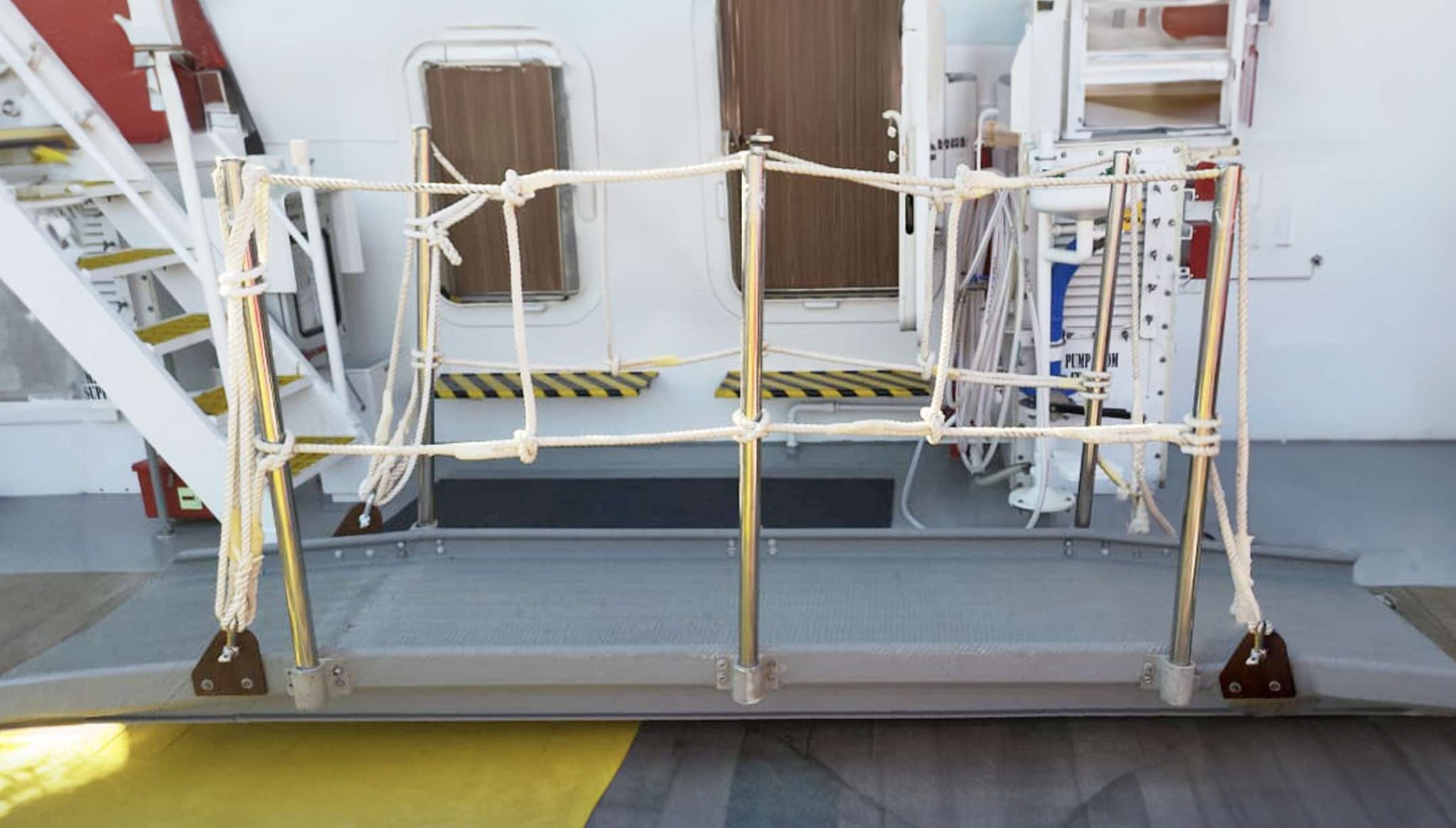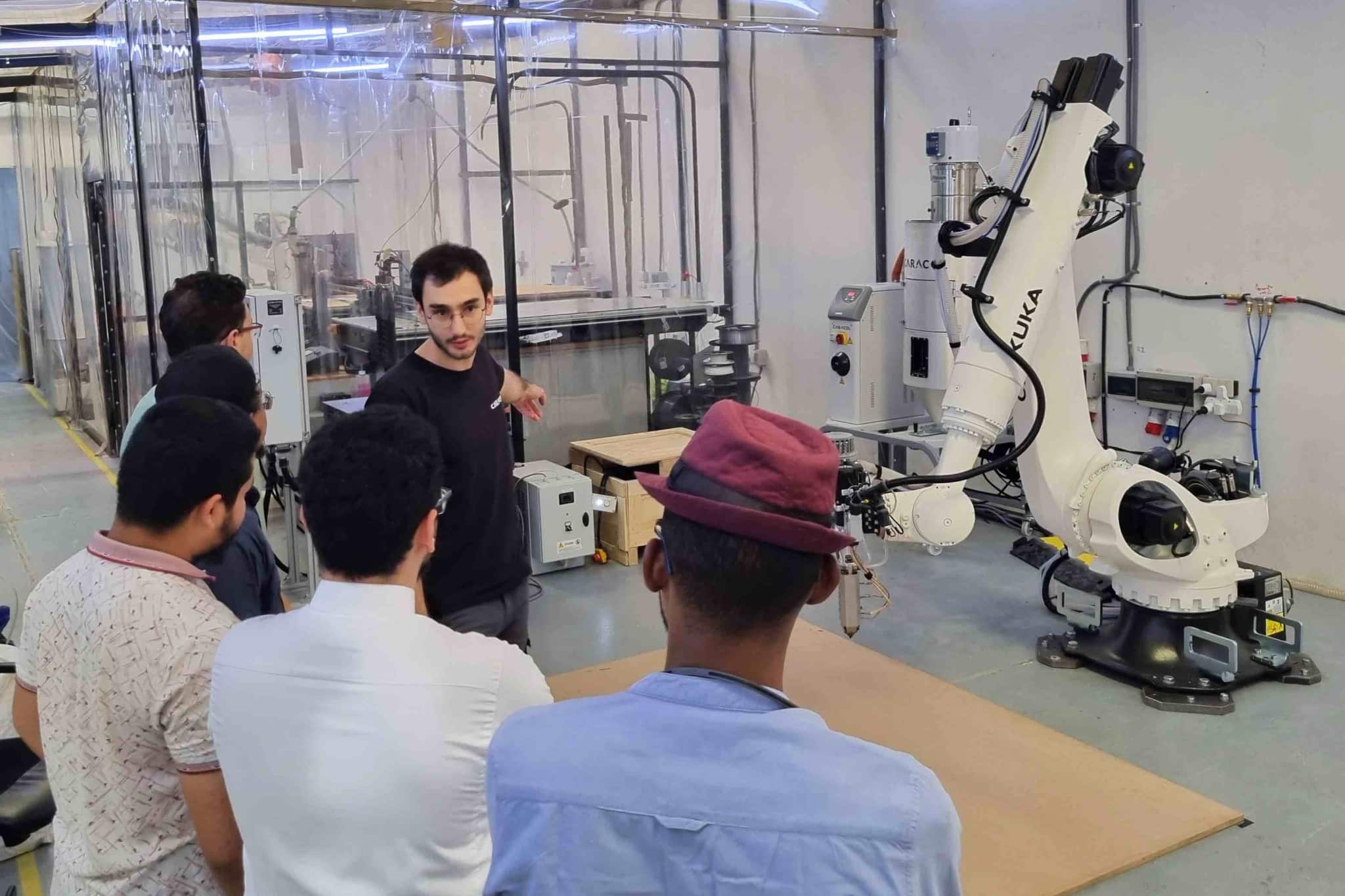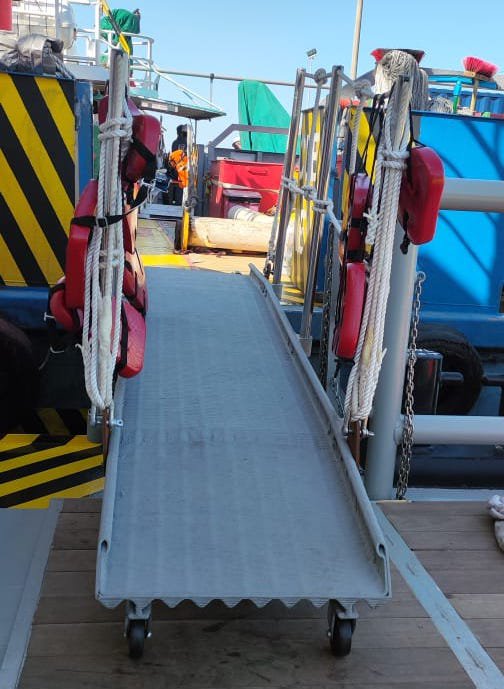Bambu Lab A1 Mini 3D Printer, Support Multi-Color 3D Printing, Set Up in 20 Mins, High Speed & Precision, Full-Auto Calibration & Active Flow Rate Compensation, ≤48 dB Quiet FDM 3D Printers
$399.00 (as of May 29, 2025 10:56 GMT +00:00 - More infoProduct prices and availability are accurate as of the date/time indicated and are subject to change. Any price and availability information displayed on [relevant Amazon Site(s), as applicable] at the time of purchase will apply to the purchase of this product.)Have you ever wondered how innovations in 3D printing are transforming the maritime industry? If so, you’ll be intrigued by Namthaja’s groundbreaking achievement. Namthaja, a Saudi Arabian 3D printing service, has recently unveiled a first-of-its-kind certified 3D printed gangway. This remarkable development in additive manufacturing could have far-reaching implications for marine applications.

$30 off $400+ Anycubic Products with code AC30OFF
The Marvel of 3D Printed Gangway
Namthaja has utilized Caracol’s Large Format Additive Manufacturing (LFAM) technology to create the first certified 3D printed gangway. This pioneering effort is designed to simplify the process of embarkation and disembarkation from marine vessels. It’s a concrete example of how additive manufacturing can meet and exceed industry standards.
Specifications and Performance
The 3D printed gangway measures three meters in length with a width of just over half a meter. Amazingly, it can withstand loads up to 750 kg with a deflection below 20 mm. Here’s a quick glance at its key specifications:
| Length | Width | Load Capacity | Deflection |
|---|---|---|---|
| 3 meters | Just over half a meter | 750 kg | Below 20 mm |
This structure was 3D printed in a single piece using a composite material known for its durability and resistance to corrosion. Marine applications frequently encounter seawater, making corrosion resistance vital. Furthermore, compared to traditional metal gangways, the 3D printed version is 30% lighter, facilitating easier transportation and installation.
Official Endorsements and Certifications
The American Bureau of Shipping (ABS), one of the foremost ship classification organizations globally, tested and approved Namthaja’s 3D printed gangway. In terms of performance, Namthaja proudly claims that the gangway exceeded the basic requirements. The standard required the gangway to support 720 kg with a deflection of 40 mm, but Namthaja’s design surpassed these benchmarks by supporting 750 kg with less than 20 mm deflection.
The Technological Backbone: Caracol’s Heron AM System
Large-Scale Implementations
Namthaja employed Caracol’s Heron AM system, an integrated robotic solution engineered for large-scale composite part production. Interestingly, Namthaja installed three Caracol systems last year, thereby solidifying its position as one of the largest large-format additive manufacturing centers in the region.
Diverse Additive Manufacturing Processes
Besides the Heron AM system, Namthaja’s portfolio includes a myriad of 3D printing technologies. These cover Fused Deposition Modeling (FDM), Stereolithography (SLA), Selective Laser Sintering (SLS), Selective Laser Melting (SLM), and Wire Arc Additive Manufacturing/Directed Energy Deposition (WAAM/DED). This versatile arsenal has allowed Namthaja to 3D print over 150,000 parts catering to a variety of industries, including maritime, industrial machinery, design, architecture, and construction.

Buy Photon Mono M5 Get Free 1KG Resin
Testimonials and Future Aspirations
Francesco De Stefano, the Co-Founder and CEO of Caracol, has lauded Namthaja for its proficiency in leveraging additive manufacturing technologies. He expressed optimism that collaborative efforts like these will pave the way for revolutionary advancements in manufacturing and production processes on a global scale.
Broader Implications for the Maritime Industry
Compliance and Safety
Securing ABS and ISO certifications is more than just ticking boxes; it signifies that the gangway adheres to stringent safety standards. This is a significant milestone in making 3D printed parts more commonplace in the marine sector.
Efficiency and Cost-Effectiveness
The 30% reduction in weight compared to conventional metal gangways offers substantial benefits in terms of transportation and installation logistics. Reduced weight translates to lower fuel consumption for shipping and easier manual handling, which can reduce labor costs and time.

Future of Additive Manufacturing in Marine Applications
Environmental Impact
Using composite materials that are resistant to seawater corrosion not only extends the lifespan of marine parts but also reduces the environmental footprint. Reduced corrosion means fewer replacements and thus less material waste over time.
Expanding Horizons
Seeing Namthaja’s success with the gangway, it’s plausible that other maritime components could also be 3D printed, pushing the limits of what’s possible. Hull components, propellers, and internal vessel structures might be next in line for a 3D printed makeover.
Closing Thoughts
Namthaja’s 3D printed gangway stands as a beacon of what can be achieved when ingenuity meets advanced technology. As the maritime industry inches towards more sustainable and efficient solutions, additive manufacturing promises to play a pivotal role.
Industry Dialogue
Namthaja’s groundbreaking project has already stirred interest within the additive manufacturing community. As the industry continues to evolve, it’s exciting to speculate on the endless possibilities that 3D printing holds. How will these innovations change the way we approach marine design and construction in the future?
So, the next time you step onto a vessel, remember that the very gangway you tread upon might well be the product of cutting-edge 3D printing technology—a testament to how far we’ve come and where we can still go.
$30 off $400+ Anycubic Products with code AC30OFF









